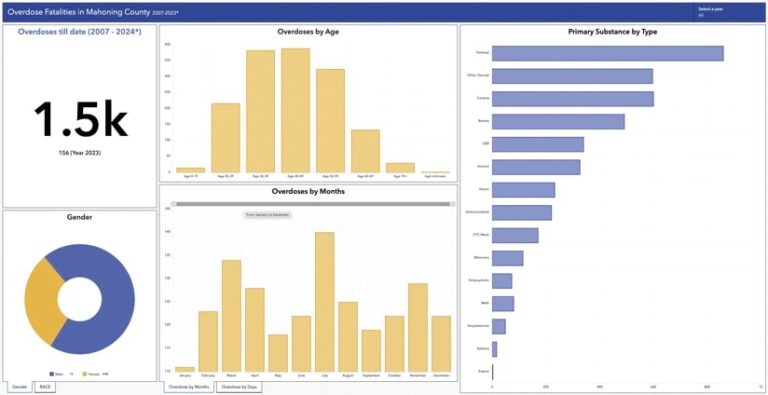Like so many communities, Mahoning County, Ohio, has seen an increase in unintentional drug overdoses and overdose deaths in recent years. According to the Centers for Disease Control and Prevention (CDC), more than one million people have died from drug overdoses in the last couple of decades. The majority of these deaths involved an opioid.
These chilling statistics represent an epidemic that affects virtually every community and cannot be ignored. And since the opioid epidemic is a community issue, it makes sense that improving outcomes starts at the community level. In most communities, public health agencies provide resources that educate residents about opioids, offer prevention services, and—if necessary—connect people with a substance use disorder to the appropriate treatment and recovery resources.
However, keeping an accurate and up-to-date inventory of these resources can be complicated. New providers become available while others close, and operating hours and contact information can change over time. Nonetheless, opioid resources must be available when people need them.
While Mahoning County provides great programs and services, staff at the county public health department knew these programs could be more effective. Its services could reach more people if they were more widely known. The county also wanted to more effectively share epidemic-related data collected since 2016.
In 2023, Bharat Chaturvedi, a public health epidemiologist with Mahoning County Public Health (MCPH), attended the Esri User Conference in San Diego, California. At the ArcGIS Solutions booth at the Expo, he discussed the issue with a product engineer, who introduced Chaturvedi to the Opioid Epidemic Outreach solution. The product engineer described how organizations like MCPH had adopted the solution with great results.

The Opioid Epidemic Outreach solution, part of the ArcGIS Solutions collection that is included with ArcGIS Enterprise and ArcGIS Online subscriptions, helps public agencies create and maintain a resource inventory, communicate important information about the severity of the epidemic, and promote resources available to community members in need. Each of the solutions contain apps, surveys, maps, feature layers, or ArcGIS Pro projects that can be configured to match organizational needs.
Prior to deploying the Opioid Epidemic Outreach solution, the county’s process was consistent but time-consuming. Analysts entered monthly epidemic data into Microsoft Excel spreadsheets, which were used to produce charts. The resultant infographics were copied into a Microsoft Word document and distributed each month through a LISTSERV email. Each static report displayed only that month’s data along with cumulative data for the year.
By adopting the Opioid Epidemic Outreach solution, MCPH moved from periodically distributing epidemic data via static reports to providing an interactive source of data with the MCPH Opioid Epidemic Outreach website (links.esri.com/MCPH). This site, created using ArcGIS Hub, provides data on overdose fatalities; the incidence of related infectious disease; and information on the location of prevention, treatment, and recovery resources. Dashboards provide statistics that compare the county with the nation; include epicenter visits and rescues; and describe the effectiveness and use of the opioid antagonist naloxone (Narcan) in the county.
The site also enables MCPH to provide resources that it couldn’t before. Community members can visit the site to find information about prevention, treatment and recovery, or harm reduction. Maps direct people to the nearest opioid treatment centers.
In addition, outside agencies can now use the site to find data needed for grant writing and community reports.
“The Opioid Epidemic Outreach dashboard has streamlined our data sharing with our community partners,” said Jennifer Patrick, a community health education specialist with MCPH.
MCPH’s website now serves as the heart of the county’s efforts to provide critical information about substance use disorders and treatment options available to the community. Chaturvedi notes that now, for both the agency and the whole community, anything and everything related to overdose resources is just one click away.
“Instead of sending out multiple reports and links to communicate information,” said Chaturvedi, “we have a one-stop shop for all things related to the opioid epidemic here in
Mahoning County.”


